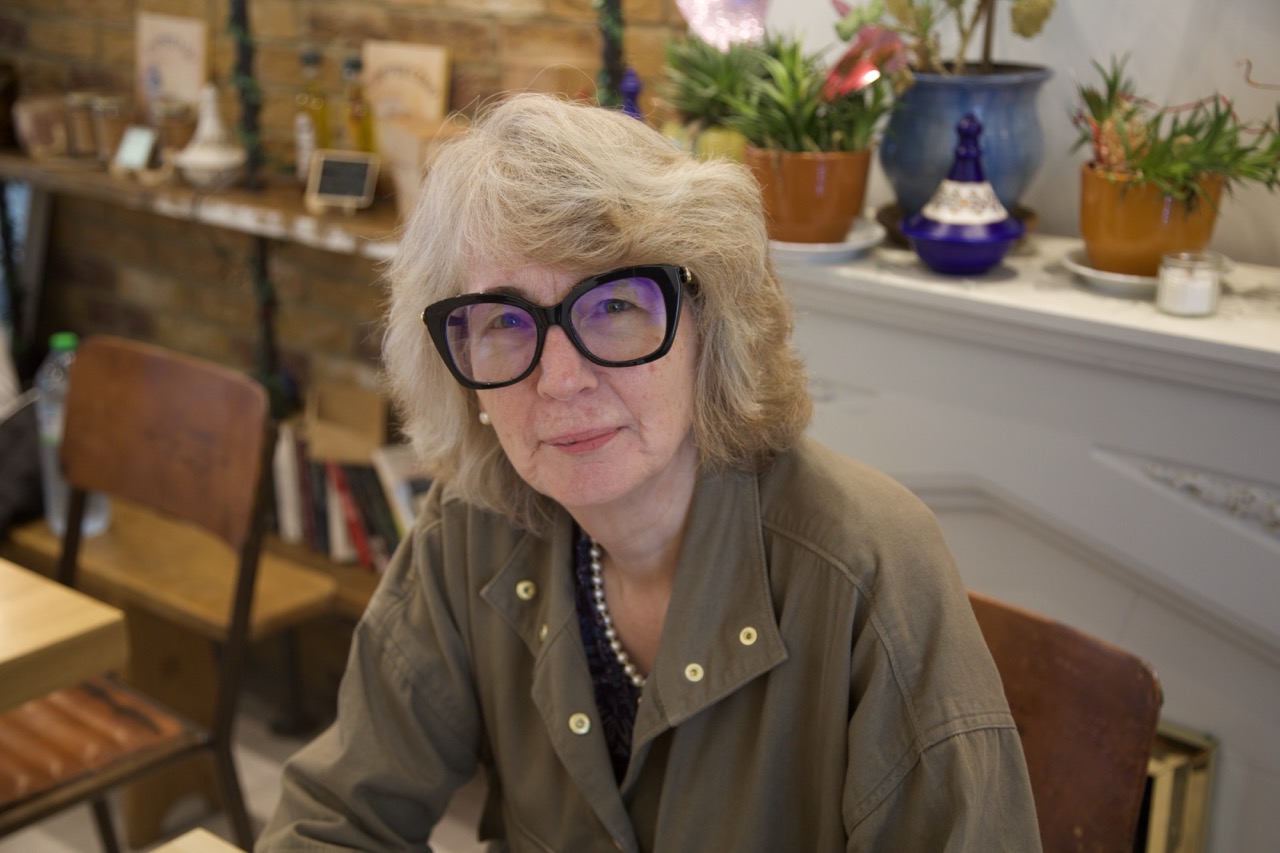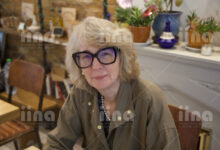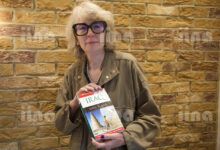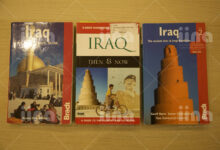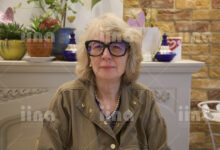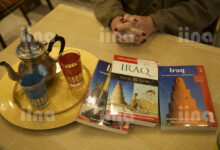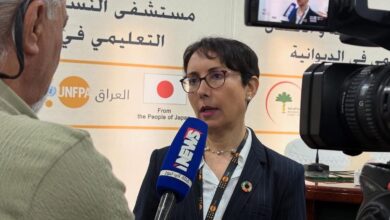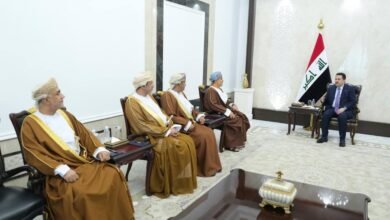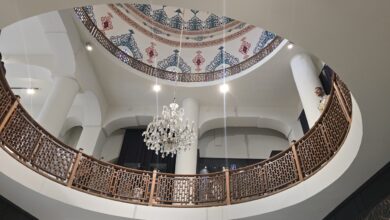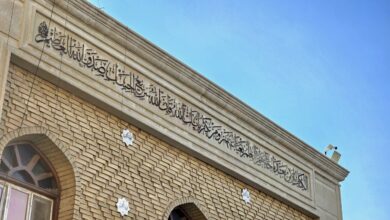In this interview, we delve into the fascinating journey of author Karen Dabrowska, whose passion for Iraq’s cultural heritage has led her to write multiple books on the subject, including the notable Iraq: Then & Now: A Guide to the Country and Its People. She recounts how her initial trip to Iraq in 1988, during the Iran-Iraq war, sparked a deep interest in the country’s rich history and culture. From working with Iraqi opposition groups to collaborating on travel guides and cultural works, her experiences and insights offer a unique perspective on Iraq’s past and present.
What initially sparked your interest in Iraq’s cultural heritage and led you to write multiple books on the subject, particularly Iraq: Then & Now: A Guide to the Country and Its People?
Well, it started when I went to Iraq in 1988 as a guest of the Iraqi Ministry of Culture and they invited me to a calligraphy exhibition. This was at the time of the Iran-Iraq war, just after the Iraqis captured the Al-Faw Peninsula and they wanted to show people that life was going on as usual in Baghdad despite the war, which was of course propaganda because Iraq did suffer quite badly in the Iran-Iraq war. When I went, I didn’t know anything about Iraq. I didn’t even know about the president and I was seeing photos of the same guy and I said: “Why do they put photos of the same guy in every café?” And when I came back to London after the trip, I thought I should actually learn something about the country, which I did. I met Dr. Sahib Al Hakim of the Iraqi Human Rights group and then I realised a lot about the regime, and that it wasn’t a very nice regime, and I probably shouldn’t have accepted a free ticket from them. Eventually, I started working for the Iraqi opposition producing newsletters and I worked with Dr. Salah Al Shaikhly, who subsequently became the first Iraqi ambassador after the downfall of Saddam. Dr Shaikhly was also very interested in culture and in his country… that was something he wanted to draw attention to more than just war and Saddam Hussein. He saw a lot of books, tourist books, about other countries in the Middle East and he had the idea: “Why not a book about Iraq?” We talked about it. He asked me if I would like to write it and I agreed, not quite knowing what I had let myself in for. And that’s how it started. Essentially, there was a gap in the market. I had the opportunity, I had the context, I had the interest and I wanted to learn something new. I think opportunity plus ability also means responsibility. If you can do something, you basically get off your back side and do it.
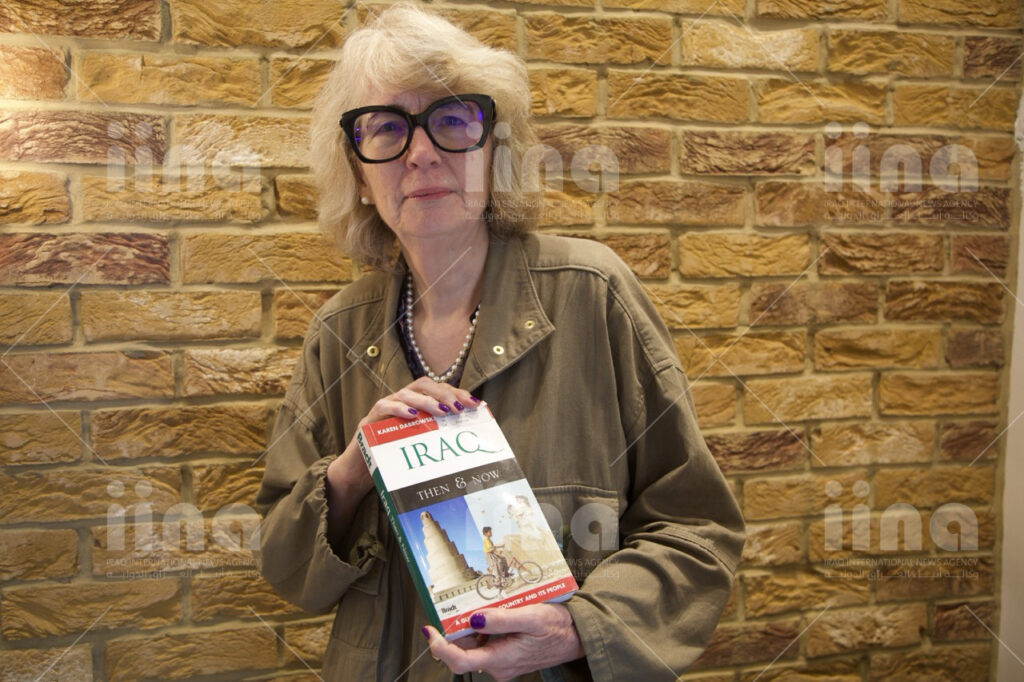
How did your approach differ when writing Iraq: The Bradt Travel Guide in 2002 compared to your other works focused on Iraq’s ancient sites and cultural heritage?
The Bradt Guide was a straight-out tourist guide. There was a tourist guide published by the Iraqi Ministry of Information, but that was around 1988, and then they ripped out the pages to do with the North because it was just after the chemical weapons attack on Halabja. It was basically filling a gap, but then Dr. Shaikhly got very busy with politics and he couldn’t really continue with the project but I didn’t want to let it go. So, I approached Bradt but they didn’t reply for a few months and I think they lost my application. Then they asked if I sent a proposal, they said they don’t have it but it sounds like a good idea, and so they commissioned it. At the time, I couldn’t go to Iraq because working for the opposition would not have been a good idea, but I met up with Geoff Hann, of ‘Hann Overland’, which then became ‘Hinterland Tours’. We produced something. It was quite hard to go to Iraq in those times because it was a real police state, but Geoff did take tours there. He even took tours there during the Iran-Iraq war, so he helped me a lot, and we produced the first Iraq Bradt Guide. Iraq: The Bradt Travel Guide got published just before the Gulf War, and then after that when we were hoping things would get better in Iraq, they didn’t actually get better. There was a civil war, an insurgency and all the rest of it. Bradt wanted to update the guide but they couldn’t really publish a travel guide because people couldn’t travel there. It wasn’t safe and that wasn’t responsible, so they departed from what they normally do and they published a book about the country and the people, with some travel information but a departure from their normal travel guides. And when they did this one (Iraq: Then & Now: A Guide to the Country and Its People), it was also a sort of departure for Bradt because then they started publishing other kinds of books like this, not just travel guides.
What are some key pieces of advice you would give to travellers about cultural awareness and religious sensitivity when visiting Iraq?
Basically, the advice you would give to any kind of traveller going everywhere, you don’t have to pinpoint it to Iraq as such. There’s a very nice quote: “Take nothing but pictures, leave nothing but memories, kill nothing but time.” I would advise above all, just respect. Respect that things are different. Maybe you have to behave in a different way. Maybe dress modestly for a woman, I think that is especially important in the south of Iraq. I think the important thing is to learn, to listen and to find out from the people about their country, which is probably quite different from the media image. Maybe not to ask too many ‘in your face’ questions like: “Are things better now or were they better under Saddam?” Those are very ‘in your face’ journalistic questions. You could say: “How has life changed?” just to be sensitive that people might not want to talk about things, especially if things have gotten worse when they were meant to get better after the war.
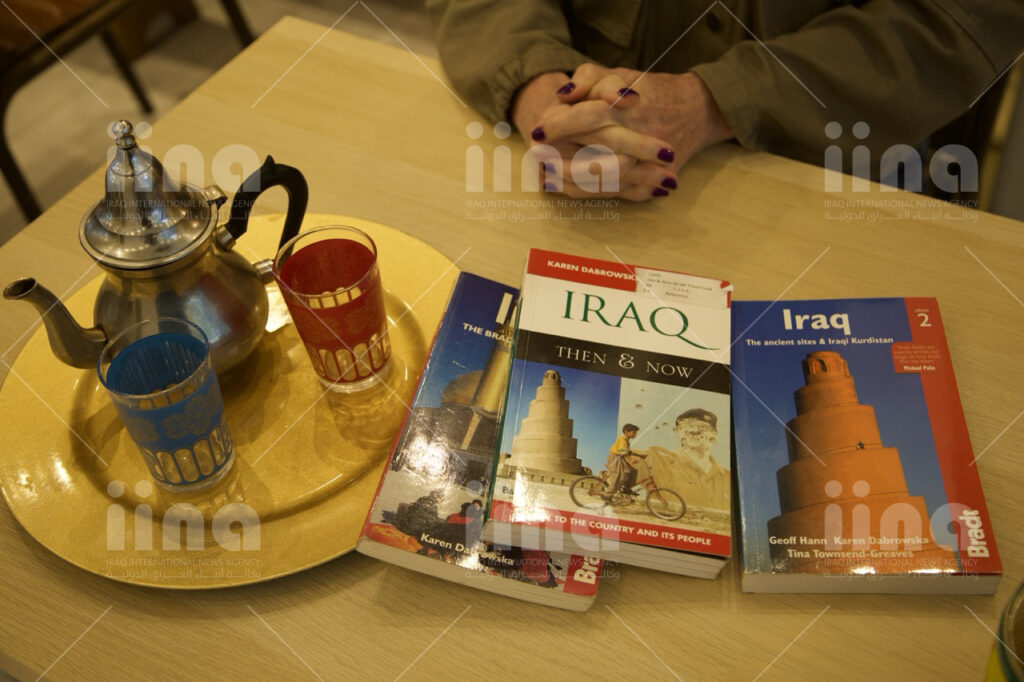
In your book Iraq: The ancient sites & Iraqi Kurdistan, how did your research and experiences differ when writing about the ancient sites of Iraq compared to your exploration of Iraqi Kurdistan?
What is important is that Iraqi Kurdistan is basically almost like a separate country. So, maybe we were kind of declaring Kurdish independence, even though they never got independence. We wanted, I think, to make a distinction between the ancient sites and the North. Now, how do we research this? Geoff did most of the research. When we were writing this book, he basically split up with his wife and he got a new wife, Tina Townsend-Greaves. She went with him to Iraq and they did most of the research. I did a lot of the history and stuff. They did their stuff on the ground, and I did the research back in London.
What drew you to write about Mohamed Makiya and his influence on modern Islamic architecture? Also, what aspects of his work and life in Baghdad stood out to you the most?
For Mohamed Makiya, what was interesting was that he had a gallery, the Kufa Gallery, which was in London. He brought the culture of Iraq to the West. Now there are galleries, there are mosaic rooms, the Brunei gallery in SOAS. This is now, but then there weren’t. It was like a meeting place. It was really interesting because he was an architect. He left Iraq for political reasons, but he actually wound up his architectural practice, even though he was quite famous. Then, he became like an ambassador for Iraqi and Islamic culture in London. I actually went to his gallery. They used to have lectures there and I knew him. When he passed, I wanted to write an obituary and his son Kanan was not keen on the idea at first. And then the Guardian wanted to publish it, so I contacted him and I said: “Look, the Guardian wants to publish this. Isn’t it important for your father in a publication like this; to introduce him and all that?” And then he agreed. I said that someone should write a biography about his father. And he said: “Yes, why don’t you do it?” So, I sort of put myself in it again. He provided a lot of information but he didn’t actually put his fingers in it. His father was in some ways quite a difficult person and some people said some really not nice things, which he actually allowed to be published. I really respect him for that because it was a serious biography that people could take, as an account of the life of the man, and not a vanity project.
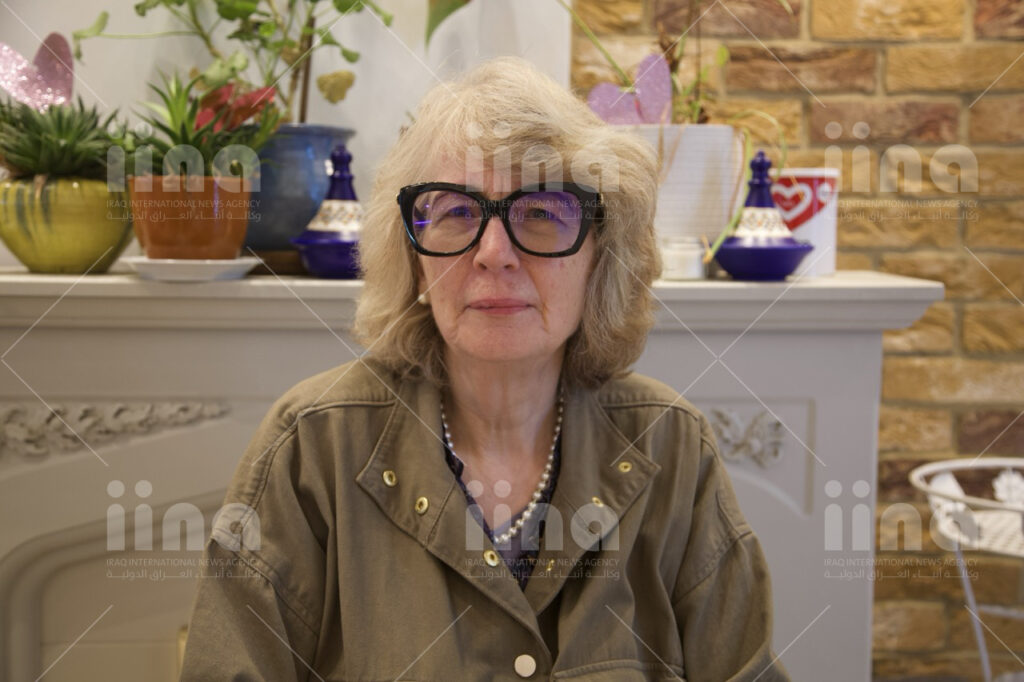
In your view, how can highlighting the rich history and archaeological prospects of Iraq help in preserving and promoting the country’s cultural heritage?
It is not just Iraqi heritage; it is the heritage of mankind. A lot of things now, that we take for granted, actually came from Iraq. I think people don’t realise that writing started in Iraq, some of the earliest epics and things like that. So, we’re not just preserving Iraqi history, we’re preserving human history. There is a lot of talk about the British museum and how some of the stuff should go back to where it came from, which I don’t want to get into. But what happened with ISIS, what happened in Mosul… some of the archaeological sites got destroyed and yet part of this heritage was actually preserved in London in the British Museum. There is a lot of optimism now. Iraq has invited Iran to Baghdad for talks, which is really promising in view of the history. They got a lot of their looted stuff back and culture is progressing, especially the arts in Basra. Artists who were in exile are coming back. And sometimes people get morbid, and I don’t think it’s good to get morbid because if we’re all morbid, we would have never written any books. We would have simply said: “Tourists can’t go there.” [Karen reads from Iraq: Then & Now: A Guide to the Country and Its People]: “History is undecided. We should set aside the psychology of failure, the mentality of deceit, the feeling of impotence, and be confident that we can make a difference.” Now there is a proper tourist guide, and people can go to Iraq.
- Published: 18th July, 2024
- Location: London
- Country: United Kingdom
- Editor: Justyna Wojtowicz
- Photographer: Justyna Wojtowicz
- Category: Cultural Heritage & Tourism

